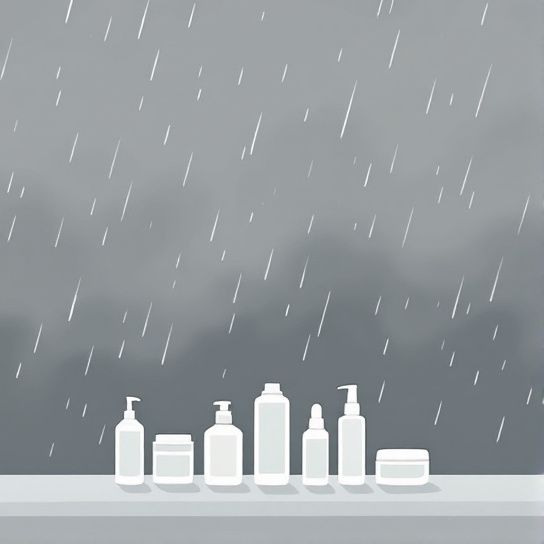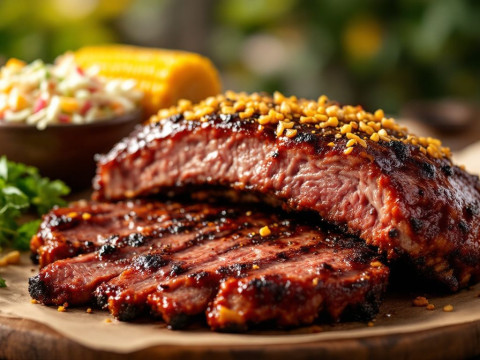Alright, so picture this: a crisp fall morning, the kind that gently shakes you awake with its chilly whispers and a sky that threatens rain at any given moment. You step outside equipped with your autumn boots, ready to crunch through the vibrant and fallen leaves. But wait—what about your skin? Yep, that’s the question floating around when it comes to embracing the soggy charms of fall. Rain’s gentle splatter is pleasing enough but can wreak havoc on your skin. Now add a dash of ‘climate acne’ into the mix, that’s when things get real interesting. But don’t sweat it; I’ve got your back (and face) with some handy tips.
Climate Acne and the Moisture Dilemma
Let’s talk ‘climate acne.’ This skin menace finds its fuel in fluctuating weather conditions. Those days when Mother Nature changes her mind from damp chills to puddle-inducing drizzles within hours—it’s a breeding ground for skin troubles. Moisture hangs in the air, clogging up pores, creating the perfect setting for breakouts to party hard.
But not to panic—you don’t have to steer clear of opening your windows to that comforting rain patter or veil yourself in countless layers. Trust me, with a few tried and true adjustments to your skincare routine, you’ll keep that pesky climate acne at bay.
Understanding ‘Climate Acne’
So, what really is this climate acne? Imagine your skin as a sponge. Humid air forces it to go on overdrive, soaking up all sorts of airborne nonsense. Coupled with the sebaceous glands pumping oil, we get the perfect recipe for breakouts. Not the kind of breakout we asked for, right?
What makes it trickier is that it can mock various skin types. Whether your skin is as parched as a fall leaf or extra oily like a well-buttered cob, erratic weather does not discriminate. That’s why it’s essential to be one step ahead, preparing your skin preemptively allows it to face the whims of weather with grace. More on that soon!

Crafting a Skin-Savvy Routine for Fall’s Moody Weather
Yes, routines matter even when it comes to our skin, especially during those wet-weather spans where it really puts up a fight. Here’s how you can shield your skin amidst unpredictable climates and manage to glow through it all with poise.
1. Cleanse with Care
First things first—let’s tackle those stuck-on impurities. When the rain makes its appearance, dust, pollutants, and allergens join the bandwagon. Cleansing should be gentle yet effective, using products that break down grime without stripping the skin.
Suggestions:
- Morning and Night Cleanser: A gel-based cleanser is worthy. It’s lightly hydrating yet oil-absorbing, giving that needed balance.
- Extra Attention Post-Drizzle: Rain strides hand-in-hand with these pollutants. Hence, cleansing is extra important post-drizzle exposure.
2. Hydration Caution
Speaking of hydrating, this isn’t just gulping down water (though don’t skip that!). It’s about targeting your skin’s moisture reserves without triggering an oil fest. Remember, balance is our word of the day here. Excess humidity can signal the skin to churn out more oil which, believe it or not, is unwanted moisture.
Tips:

- Lightweight Moisturizers: Choose non-comedogenic formulas. These minimize clogged pores, avoiding those climate acne flare-ups.
- Serum Love: Opt for hyaluronic acid serums. They hydrate deeply minus the oily backlash.
3. Exfoliation—Moderation is Key
Cleansing is incredibly crucial, but adding exfoliation into that mix carefully is increasingly important. In fall, when the weather tends to change without a cue, skin can pile on dead cells double-time.
Hoodoo’s:
- Once or Twice Weekly: Make peace with exfoliants once or twice a week. It keeps skin refreshed without overly aggravating it.
- Consider Enzymatic Exfoliants: They’re kinder and avoid scrubs in sandy form.
Into the Wild – But With Sun Protection
A common misstep? Underestimating UV exposure when it’s nothing but grey gloom above. The sun’s UV mercenaries work overtime, stealthily penetrating the clouds we presume as shields.
Recommendations:

- Rainproof Sunblocks: Look for a light SPF lotion that won’t melt away like autumn’s first snow.
- Reapply Freedom: Leave a squeeze bottle in your to-go bag for frequent reapplicability.
Taming Lifestyle Triggers
Our lazy pillows breed more than dreams, also nurturing bacteria colonies which cozy up to your skin. Couple that with junk food feasts that seem to double-down with all the bustling holiday egging on. Balancing life helps skin bounce back resilient and radiant!
Key Lifestyle Balances:
- Diet Control: Fiber-loaded fruits, leafy wonders, and limited dairy do wonders.
- Linen Love: Crisp and fresh pillow swap-outs create fewer chances for acne collaborations.
- Psychological Respite: Stress translates straight to skin as bloating stress pimples. Calming exercises reduce that intensity.
Conclusion: Weather-Proof Your Skin
Adventure beckons even when it sprinkles golden autumn rain. Falling comfortably into a clueful skincare routine helps revel in charm over turmoil. Unpredictable skies crowdfall becomes less scary. Remember, the best defense is a smart shield—against whipping winds, chilly rains, and that impromptu warm patch.
As you navigate those soggy fall sweeps, equip your skin with love and smarts, stepping out with a grin tough enough to shine up the grey. Protect, clarify, energize against climate acne—you’re now rained, seasoned, and stubborn as a fall leaf on the rainbow spectrum!
Frequently Asked Questions
How does climate change affect acne?
Climate change can exacerbate acne through several mechanisms. Warmer temperatures and increased UV radiation can stimulate the growth of *Cutibacterium acnes* (C. acnes), a bacteria associated with acne. Additionally, changes in temperature and humidity can increase sebum levels and pilosebaceous unit swelling, leading to acne flares[1][4].
What specific climatic factors contribute to acne flares?
Specific climatic factors such as increased UV radiation, higher temperatures, and altered humidity levels can contribute to acne flares. UV radiation can lead to hyperplasia of the sebaceous glands, while warmer temperatures increase sebum production and humidity can cause pilosebaceous unit swelling. These changes can promote the growth of C. acnes and lead to persistent inflammation[1][4].
How do seasonal changes impact acne?
Seasonal changes can significantly impact acne. During the transition from summer to winter, dry air can cause the skin to overproduce oil, leading to winter acne. Conversely, the increased humidity in warmer months can trap oil on the skin’s surface, creating an environment where acne-causing bacteria can thrive. These seasonal fluctuations can make acne more severe and difficult to treat[3][5].
What can be done to prevent or manage climate-related acne?
To prevent or manage climate-related acne, it is important to adjust skincare routines according to seasonal changes. This includes using gentle cleansers and moisturizers, avoiding hot showers, and applying sunscreen to protect against UV radiation. Additionally, maintaining a balanced diet and reducing exposure to air pollutants can help mitigate the effects of climate change on acne[2][4][5].
References- Boos, M. D., et al. (2022). Acne Flares May be Worsened by Climate Change. Dermatology Times.
- A Review of Advancement on Influencing Factors of Acne. (n.d.). A Review of Advancement on Influencing Factors of Acne. PMC.
- Dermatologist Tips: Preventing and Treating Winter Acne. (2022). Dermatologist Tips: Preventing and Treating Winter Acne. Westlake Dermatology.
- The influence of exposome on acne. (n.d.). The influence of exposome on acne. PMC.











